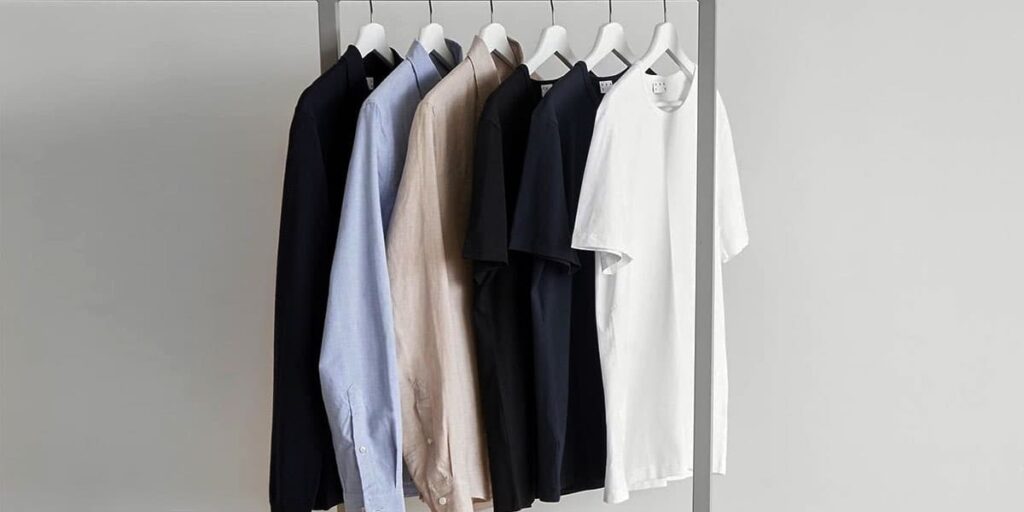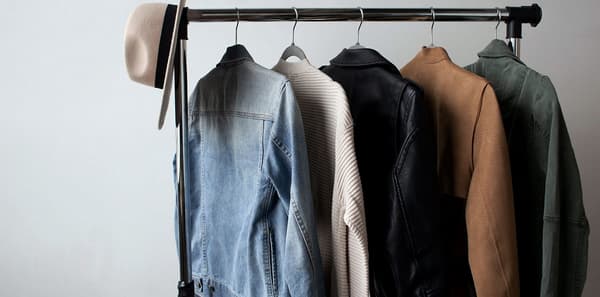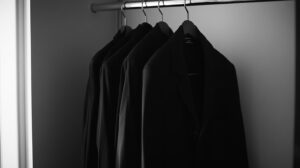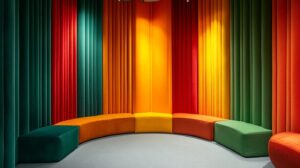If there is anything stable in this world, it is not fashion. Hence, minimalist fashion represents a departure from excessive ornamentation and complicated designs, instead focusing on streamlined silhouettes, neutral colors, and versatile pieces that stand the test of time.
Since I love following modern trends (no, you won’t see me in a quadrobics mask), I decided that the time has come for me to share how to incorporate minimalism into your own wardrobe.
Key Elements of Minimalist Fashion
- Neutral color palette. The first rule is that the basic layer consists of a carefully curated palette of neutral hues. Black, white, grey, beige, and muted tones form the foundation of this aesthetic. These colors create a sense of harmony and sophistication and allow for easy mixing and matching of garments. For example, you can easily pair a crisp white shirt with black trousers for a classic look or beige chinos for a more casual vibe.
- Clean lines and simple silhouettes. The second rule is that minimalist fashion emphasizes clean, uncluttered designs. Garments feature sharp tailoring and streamlined silhouettes that showcase the beauty of simplicity. A well-cut blazer with minimal detailing or a sleek sheath dress exemplifies this principle. Missing all those fancy embellishments? You surely shouldn’t, as the absence of unnecessary embellishments allows the quality of the fabric and construction to shine through.
- Versatility and functionality. Finally, the last key tenet of minimalism is the idea that less is more. For example, a classic trench coat, for instance, can be worn over various outfits, from casual jeans and a t-shirt to a formal dress.

The Appeal of Minimalist Fashion
Simple fashion trends come and go, but minimalist style endures. By focusing on classic pieces and avoiding fleeting fads, minimalist fashion creates a wardrobe that remains relevant year after year. I enjoy this aspect the most about this trend, as it guarantees that my style will always look polished.
Furthermore, minimalist fashion isn’t just about looking good—it’s about making thoughtful choices. A wardrobe built around neutral colors and timeless designs allows for endless combinations, meaning you need fewer pieces to create a variety of outfits. This versatility makes minimalist fashion ideal for busy individuals who want to look effortlessly chic with minimal effort.
Another compelling reason for the popularity of minimalist fashion is its connection to sustainability. By investing in fewer, higher-quality pieces that last longer, this approach naturally reduces waste and the demand for fast fashion. In a world where trends change rapidly, minimalist fashion encourages slower, more deliberate clothing consumption.
Rather than relying on loud prints or excessive accessories to stand out, minimalist fashion emphasizes the power of simplicity. A well-fitted black dress or a perfectly tailored white shirt can speak volumes about one’s style and confidence without saying a word. This quiet sophistication makes minimalist fashion an enduring choice for those who appreciate elegance in its purest form.

How to Build a Minimalist Wardrobe
I always recommend creating a minimalist wardrobe by identifying key pieces that will form the foundation of your style. Instead of accumulating numerous inexpensive, trendy items, invest in well-made pieces that will last. For example, a high-quality cashmere sweater might cost more upfront. Still, it will retain its shape and softness for years, making it a better long-term investment than several cheaper alternatives.
My favorite concept, a Capsule Wardrobe, takes the principles of minimalist fashion to the next level. It comprises a limited number of versatile pieces that can be combined to create a wide range of outfits. Typically, a capsule wardrobe includes around 30-40 items, including clothing, shoes, and accessories. This approach simplifies your daily outfit choices and encourages more thoughtful consumption.
As with my wardrobe, I started by embracing neutral color fashion, selecting a core color palette of black, white, gray, and navy. Then, I picked my key pieces in these colors. So, my minimalist wardrobe essentials include:
- 6 T-shirts and 3 long-sleeve shirts
- 4 button-downs (including both casual and dressier options)
- 3 pairs of jeans and 3 pairs of trousers/chinos
- 3 pieces of outerwear (blazer, casual jacket, coat)
- 4 pairs of shoes (sneakers, dress shoes, boots, loafers)
- 2 belts, 1 watch, 2 ties (rarely used, tbh, but I still have them)
After establishing this foundation, I added a few accent pieces in complementary colors or patterns to provide variety. This approach has created a versatile, manageable wardrobe that simplifies my daily choices while expressing my style.



